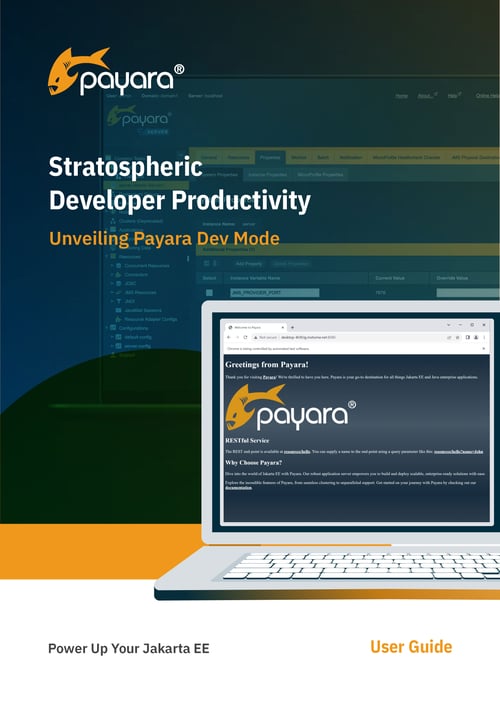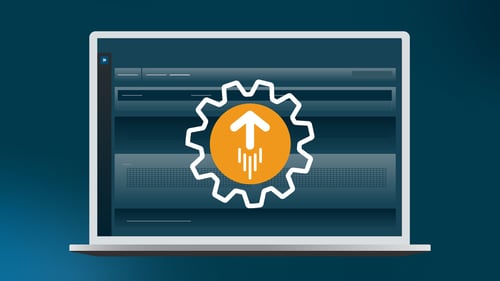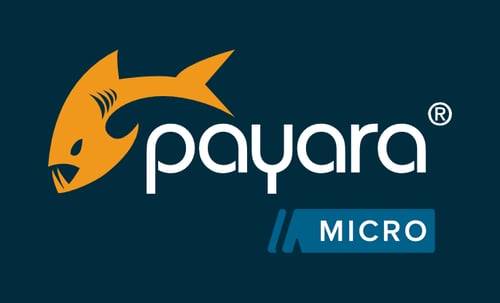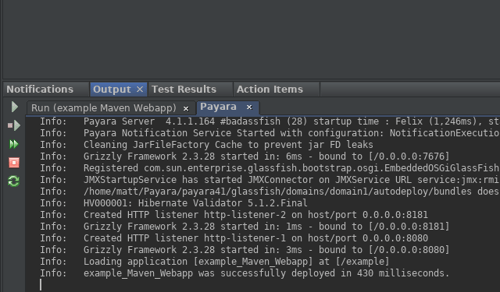Posts tagged Maven
Boost Developer Productivity with Payara Server Maven Plugin + AI Agent
Published on 12 Sep 2025
by Gaurav Gupta
Topics:
Maven,
Payara Server,
Payara Community,
AI
|
0 Comments
Managing Payara Server Just Got Smarter
Imagine managing your Jakarta EE applications not just with Maven goals, but by asking natural questions.
With the experimental AI Agent built into the Payara Server Community's Maven Plugin, you can now query server internals and perform admin tasks using plain English — directly from the same terminal where you build and deploy your applications.
Thanks to this integration, developers can inspect, query and even execute server commands using natural language. It's a powerful and intuitive way to interact with Payara Server — no need to remember long command syntax or dig through documentation.
In this post, I’ll walk you through how it works, with real examples that show just how seamless the AI-powered CLI experience can be.
Maven 4: Streamlining Enterprise Java Development with Jakarta EE, Spring Boot and Quarkus
Published on 08 May 2025
by Luqman Saeed
Topics:
Maven,
Spring Boot,
Jakarta EE,
quarkus
|
0 Comments
After two decades as Java's dominant build tool (no offense to Gradle), Maven is undergoing its most significant evolution. While the official Maven documentation outlines the technical changes in Maven 4, this blog post focuses specifically on what these changes mean for enterprise developers working with Jakarta EE, Spring Boot and Quarkus.
Deploy Jakarta EE & MicroProfile Apps Faster with the Payara Cloud Maven Plugin
Published on 28 Jun 2024
by Luqman Saeed
Topics:
Maven,
Payara Cloud,
Jakarta EE
|
0 Comments
As a Java developer, you've probably experienced the challenges of deploying Jakarta EE or MicroProfile applications to the cloud. Setting up infrastructure, configuring servers and dealing with the gamut of cloud environments can be a major deviation from your core development tasks, ultimately influencing your productivity. However, there are tools that you can leverage to simplify and streamline cloud deployments. One is Payara Cloud Maven plugin - let's look at what it offers and how to use it in this blog post.
Maven Dependency Scopes: Choosing the Right Tool for the Job
Published on 03 May 2024
by Luqman Saeed
Topics:
Maven,
Java
|
0 Comments
Maven is arguably the most used build automation tool in the Java ecosystem. With that great power and popularity, comes great...configuration options! One such option that can leave you scratching your head is dependency scopes. This blog post takes a quick look at maven scopes, what they are and when to choose which scope.
Streamlining Payara Micro Development with Dev Mode
Published on 24 Apr 2024
by Gaurav Gupta
Topics:
Maven,
Payara Micro,
IntelliJ,
payara starter
|
3 Comments
Introduction
Payara Micro, a lightweight and flexible microservices runtime platform, offers a seamless development experience through its Maven plugin. In this guide, we'll explore the Dev Mode of Payara Micro Maven plugin, focusing on the dev goal. This goal is tailored to streamline development by enabling various features for an efficient workflow.
Stratospheric Developer Productivity - Unveiling Payara Dev Mode
Published on 19 Apr 2024
by Chiara Civardi
Topics:
Maven,
Payara Micro,
DevOps,
Payara Platform,
Java,
Jakarta EE
|
0 Comments
Development productivity is crucial in Enterprise Java and Jakarta EE application development, supporting the delivery of high-quality software solutions quickly and efficiently. As a result, it is necessary to focus on streamlining development processes, optimizing resource utilization and empowering developers to work more effectively. Payara Micro Maven Plugin, Version 1, introduces a powerful tool – Dev Mode – designed to supercharge your development experience with Payara Micro.
In our latest User Guide - available to download here - we look at this plugin, exploring its features, configurations and usage to help developers unlock stratospheric levels of productivity.
A Smooth Transition to Tomorrow: Unveiling the Upgrade Adviser Tool for Jakarta EE 10
Published on 05 Sep 2023
by Alfonso Altamirano
Topics:
Maven,
CLI,
Jakarta EE,
J2EE
|
2 Comments
One of the most daunting tasks organizations face is keeping pace with fast evolving technological landscapes, while ensuring existing applications remain robust and functional. If you're still running applications on Java EE 7/8, the release of Jakarta EE 10 sets the upgrade clock ticking. Of course you can keep running such applications with a Payara Enterprise 5 plan. However, if you need to upgrade to take advantage of the many new features in Jakarta EE 10, then read on!
Payara Micro 5によるUber JARの作成
Published on 18 May 2021
by Fabio Turizo
Topics:
What's New,
Maven,
Payara Micro,
Microservices,
Docker,
Uber JAR,
DevOps,
Japanese language
|
0 Comments
Payara Microでは、Webアプリケーションを自己完結型で簡単に実行することができます。2016年5月のPayara Serverリリースからは、WARファイルの内容とPayara Microを構成するクラスやリソースを束ねる “Uber JAR” を作成する簡単な方法があります。
この “Uber” Jarは、Dockerコンテナ内でアプリケーションを実行するための最良の方法ではないことに注意してください。アプリケーションに小さなコード変更を加えるたびに、バイナリ全体のアップデートが必要になるためです。より良い方法は、Payara Microインスタンスを起動して、インストールが必要なアプリケーションを指定することです。詳細については Payara Micro Docker Image documentation をご覧ください。
(最終更新日 2021/04/06)
Did You Know? Payara Micro Allows Deploying Directly from Maven Central!
Published on 15 Oct 2018
by Matthew Gill
Topics:
Maven,
Payara Micro,
Payara Platform 5
|
0 Comments
Payara for Beginners - Payara ServerをNetBeansに追加する
Published on 17 Aug 2018
by Matthew Gill
Topics:
Maven,
Payara Server Basics,
How-to,
NetBeans,
Japanese language
|
0 Comments









